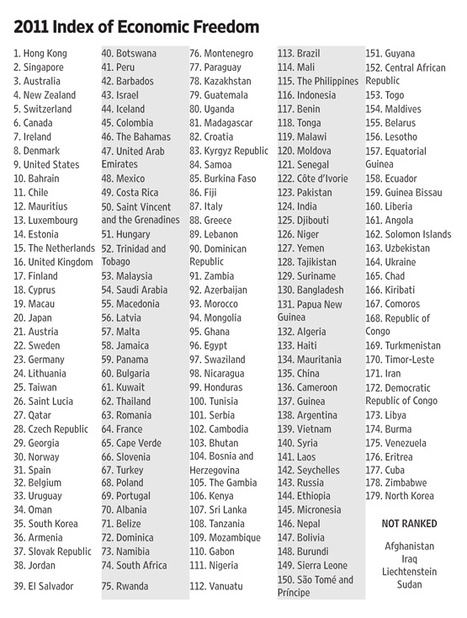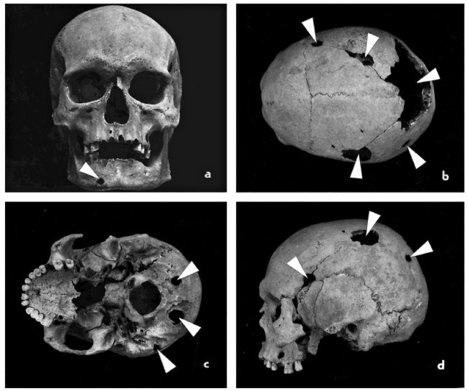 Source of table: online version of the WSJ article quoted and cited below.
Source of table: online version of the WSJ article quoted and cited below.
(p. A15) Riots in Greece and France! An IMF bailout for Ireland! The Euro under threat! A new government in London! Tea parties in America! Is it the end of capitalism? Many were predicting just that last year.
The 2011 Index of Economic Freedom, released today by the Heritage Foundation and The Wall Street Journal, tells a different story. The Index records countries’ commitment to the free enterprise/capitalist system by measuring 10 categories of economic freedom: fiscal soundness and openness to trade and investment, government size, business and labor regulation, property rights, corruption, monetary stability and financial competition.
The good news this year? One hundred and seventeen countries, mainly developing and emerging market economies, improved their scores, and the average level of economic freedom around the world improved by about a third of a point on the Index’s 0 to 100 scale.
. . .
For the U.S. and the U.K., the Index of Economic Freedom confirms what those countries’ voters already knew, that there is an urgent need for real change. The U.S. dropped to ninth place in the 2011 Index from eighth (its lowest economic freedom score in a decade), and the UK fell all the way to 16th place from 11th.
For the full commentary, see:
TERRY MILLER. “The U.S. Loses Ground on Economic Freedom.” The Wall Street Journal (Weds., JANUARY 12, 2011): A15.
(Note: ellipsis added.)
(Note: the last sentence quoted above is the slightly more informative print version rather than the slightly less informative online version.)






